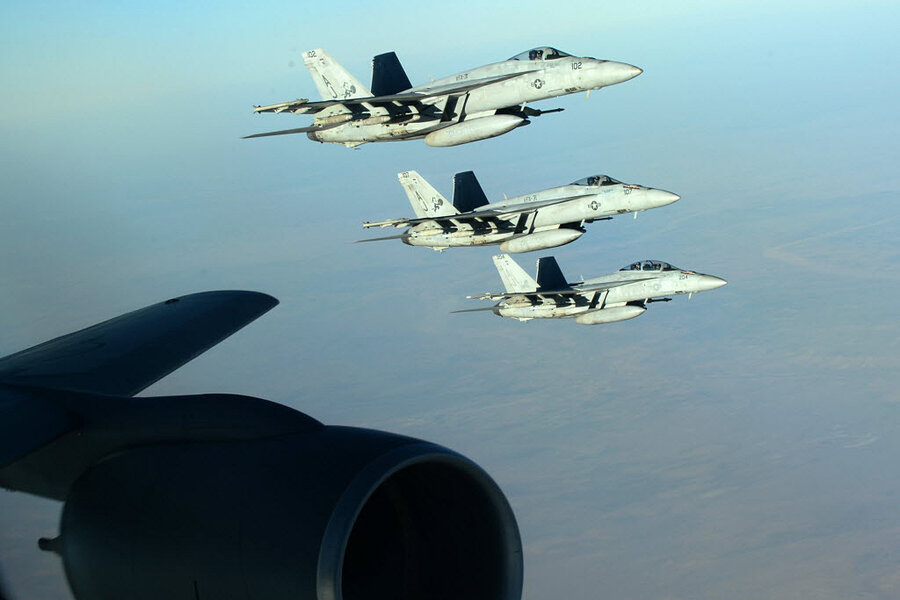Air Force: ISIS selfie led to its headquarters destruction
Loading...
Islamic State’s presence on social media, especially Twitter, has been linked to its worldwide recruiting success, and the group has been called the most media-savvy terror group in history. Recently, though, a selfie got them into trouble.
US Air Force Gen. Hawk Carlisle, head of Air Combat Command, explained at an Air Force Association breakfast on Monday how a group of airmen stationed at Hurlburt Field, Florida, saw a photo on social media of an Islamic State militant at his command post. Less than a day later, the Air Force claim, they destroyed the Islamic State headquarters building in the photo.
“The guys that were working down out of Hurlburt, they’re combing through social media and they see some moron standing at this command,” General Carlisle said. “And in some social media, open forum, bragging about the command and control capabilities for Daesh, ISIL. And these guys go: ‘We got an in.’ So they do some work, long story short, about 22 hours later through that very building, three [Joint Direct Attack Munitions] take that entire building out.”
While this particular operation worked out in the US military’s favor, operational security (OPSEC) lapses caused by careless social media postings have been a problem for US forces in the past.
In 2007, American soldiers took photos of the arrival of a fleet of helicopters at a base in Iraq. When the photos were uploaded to the Internet, their location was tracked by insurgents and four of the helicopters were destroyed in a mortar attack, Col. Steve Warren said in 2012.
Photos taken on modern smartphones are often "geotagged" by default, using the device's GPS features to embed location details in image files. Unless the feature is manually disabled or those details are stripped out of the file, copies of the digital photo can contain telltale location data.
Experts told Congress at a House Homeland Security Committee hearing on Wednesday that the Islamic State has posted a total of over 1,700 photos, videos, and other publications on social media to date, and has reached over 200,000 users.
Carlisle said that in the fight against Islamic State, the Air Force has launched 4,200 strikes, resulting in the deaths of 13,000 Islamic State militants. He used Monday’s anecdote to suggest that the Air Force could feasibly deploy fewer airmen than in the past, but acknowledged that future operations dealing with the communication of intelligence would likely not be as easy as this one was.
“It was a post on social media to bombs on target in less than 24 hours,” Carlisle said. “Incredible work when you think about [it].”








